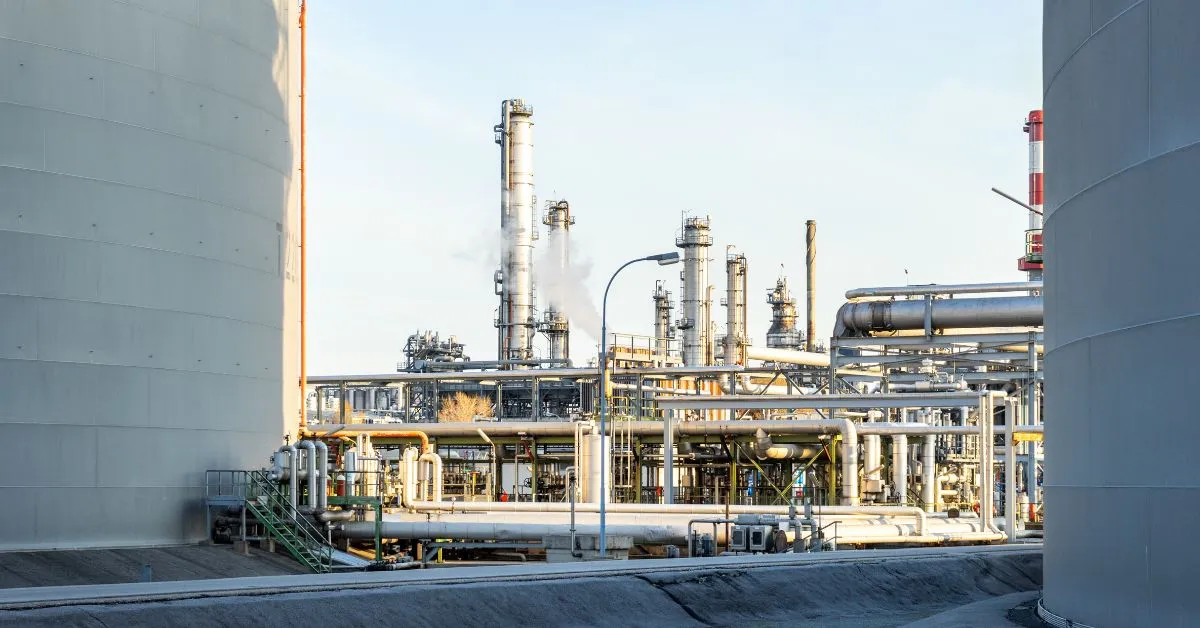Every barrel of oil moves through a gauntlet of operational trade-offs: temperature versus throughput, energy versus yield, speed versus equipment life. In refineries, petrochemical complexes, and midstream facilities, these decisions play out continuously across interconnected units where a change in one area ripples through dozens of others.
The opportunity is clear, but capturing it remains elusive. According to McKinsey research, only 30% of oil and gas companies have successfully scaled digital technologies to deliver meaningful improvement. The rest remain stuck in pilot phases or early experiments. The barrier isn’t the technology itself; it’s the gap between isolated point solutions and the system-wide optimization that complex operations demand.
AI-powered process control offers a fundamentally different path: technology that learns from actual plant behavior, adapts to changing conditions, and captures efficiency improvements that conventional approaches miss. For oil and gas leaders, the question is no longer whether to adopt AI, but how to capture value at every stage of the journey toward autonomous operations.
Why Oil and Gas Operations Need AI Now
Operational efficiency has always mattered in oil and gas, but the current market environment has raised the stakes. Commodity prices remain volatile, infrastructure continues aging, and governments are enforcing stricter environmental regulations. This combination creates intense margin pressure that traditional optimization approaches cannot address.
These pressures translate into three core constraints:
- Cost management amid price swings: Operators must extract maximum value from existing assets when margins compress, yet traditional control systems lack the adaptability to optimize continuously as conditions change
- Regulatory compliance: ESG mandates require measurable emissions reductions and transparent reporting that manual monitoring cannot reliably deliver
- Production reliability: Aging assets demand more sophisticated maintenance strategies to prevent unplanned downtime while extending equipment life
AI helps bridge the gap between increasingly complex operations and the need for consistent profitability. Rather than replacing human expertise, AI combines operator knowledge with machine precision, managing data complexity and operational variability while operators focus on strategic decisions and process understanding. This partnership protects margins in a volatile energy market.
Where AI Adds Immediate Value
AI generates value at every stage of the oil and gas value chain. While specific applications differ by segment, the goal remains consistent: improve operational efficiency, reduce costs, and support environmental compliance.
Upstream
Exploration and production activities benefit from AI-powered insights across multiple dimensions. Seismic data interpretation becomes faster and more accurate, helping companies identify promising drilling locations while reducing exploration risk. During drilling, AI optimizes bit selection and parameters in real time, anticipating problems before they occur and reducing non-productive time.
Reservoir modeling improves through AI analysis of seismic data alongside production history, enabling better recovery forecasts and reserve estimates. Predictive approaches for critical assets like electric submersible pumps prevent costly failures, directly supporting production targets through reduced unplanned downtime.
Midstream
Midstream operations focus on transportation, storage, and processing. AI enhances pipeline integrity monitoring through sensor data analysis, detecting leaks or anomalies early to prevent safety incidents and regulatory penalties.
Compressor performance analytics continuously adjust operating conditions to improve uptime and reduce energy consumption. Scheduling systems coordinate product flows across pipelines, terminals, and storage facilities, anticipating bottlenecks and minimizing demurrage costs while improving asset utilization.
Downstream
In refining and distribution, AI contributes directly to margin improvement. Yield optimization uses AI to maximize output quality and quantity, accounting for feedstock variability and changing market demands. Energy management systems optimize steam, power, and cooling systems to reduce energy intensity and lower carbon footprint.
Emissions monitoring enables real-time compliance tracking and faster response to potential issues. Predictive maintenance shifts from reactive to proactive, extending equipment life and reducing turnaround times. Together, these applications deliver measurable improvements in cost per barrel, energy efficiency, and risk reduction.
High-Impact AI Applications Delivering Results
Several AI applications have demonstrated clear value across oil and gas operations, addressing key operational constraints while delivering strong returns:
- Predictive maintenance: AI analyzes sensor data including vibration and temperature patterns to predict failures before they occur, enabling scheduled maintenance during planned shutdowns rather than emergency repairs during production
- Real-time production optimization: Dynamic models adjust production parameters based on live data, capturing efficiency improvements that static approaches miss when conditions change
- Crude blending optimization: AI optimizes blend ratios continuously, reducing conservative over-blending of expensive components while maintaining product quality specifications
- Process control optimization: Advanced control systems adjust process parameters based on real-time conditions, reducing variability and capturing optimization opportunities that manual adjustments cannot achieve
- Energy load optimization: Predictive models optimize energy usage patterns, reducing costs through improved load balancing and demand response across utility systems
- Emissions management: AI integrates sensor and operational data to predict and prevent emission events, reducing regulatory risk while supporting ESG targets
These applications work across operating modes. Even in advisory mode, where AI provides recommendations while operators retain full control, plants capture meaningful value through enhanced visibility and decision support. As teams build confidence, they can progressively enable more autonomous optimization.
Building the Foundation for Sustainable AI Value
Reliable AI outcomes depend on data quality and organizational readiness. Many oil and gas operations face data constraints including inconsistent historian tags, gaps in time-series data, and sensor calibration issues. However, data readiness is a journey, not a prerequisite.
Plants can begin AI optimization with existing operational data while improving infrastructure in parallel. The foundation strengthens through three focus areas:
- Historical data preparation: Gathering and cleaning operational data provides context for AI training, enabling models to understand normal patterns and respond to variations accurately
- Data governance: Assigning ownership for data quality standards ensures ongoing reliability and builds operator confidence in AI outputs
- Real-time integration: Connecting sensor networks to AI platforms provides current operational data for timely insights and recommendations
Implementation typically follows a phased approach. Plants progress at their own pace: starting with advisory recommendations that build operator confidence, enabling supervised automation within defined boundaries as trust develops, and moving toward closed loop optimization within validated operating envelopes. Starting with a high-impact unit, such as crude blending, reformer optimization, or hydrogen balancing, allows teams to demonstrate value quickly while building organizational capability. Collaboration between AI specialists and operations experts during model development builds trust, as operators engage more readily with models they helped shape.
The most effective implementations position AI as a decision-support tool that enhances operator judgment rather than replacing it. When operators understand why recommendations matter, they act on them, and the resulting data improves future recommendations. This creates a virtuous cycle where human expertise and machine learning reinforce each other.
The Path Toward Autonomous Operations
The trajectory toward AI-driven optimization is accelerating across oil and gas. According to BCG research, AI-first companies can achieve substantial EBIT improvements over five years, with meaningful operational cost reductions. This performance gap represents fundamental restructuring of industry economics.
The path to autonomous optimization does not require immediate closed loop implementation. Many operations begin in advisory mode, where AI models provide recommendations while operators retain full control. Significant value accrues through enhanced visibility, operator training, and cross-functional alignment around a single model of operational behavior.
As teams build confidence in the technology’s predictions, they can progressively enable supervised automation within operator-defined boundaries, and eventually full closed loop optimization within validated operating envelopes. This journey approach reduces implementation risk while capturing value at each stage.
Companies implementing comprehensive AI programs now build foundational capabilities, including data integration, internal expertise, and organizational readiness, that position them for competitive advantage as the industry transforms. Those that move decisively will lead on performance, compliance, and long-term resilience.
How Imubit Delivers AI Optimization for Oil and Gas Operations
For oil and gas operators seeking to unlock hidden capacity and improve margins across their value chain, Imubit’s Closed Loop AI Optimization solution addresses the core limitations of traditional control approaches. The technology combines deep reinforcement learning (RL) with real-time process data to continuously optimize operations and improve performance over time.
Unlike conventional advanced process control (APC) solutions that require extensive modeling efforts and manual retuning, the AIO solution learns directly from historical plant data and writes optimal setpoints to the control system in real time. By continuously adapting to changing conditions, including feedstock variations, equipment aging, and market dynamics, Imubit enables operators to reduce energy consumption, maximize yield, and improve uptime simultaneously.
Get a Plant Assessment to discover how AI optimization can improve margins and operational performance across your oil and gas operations, whether you’re starting with advisory mode or ready for closed loop control.




